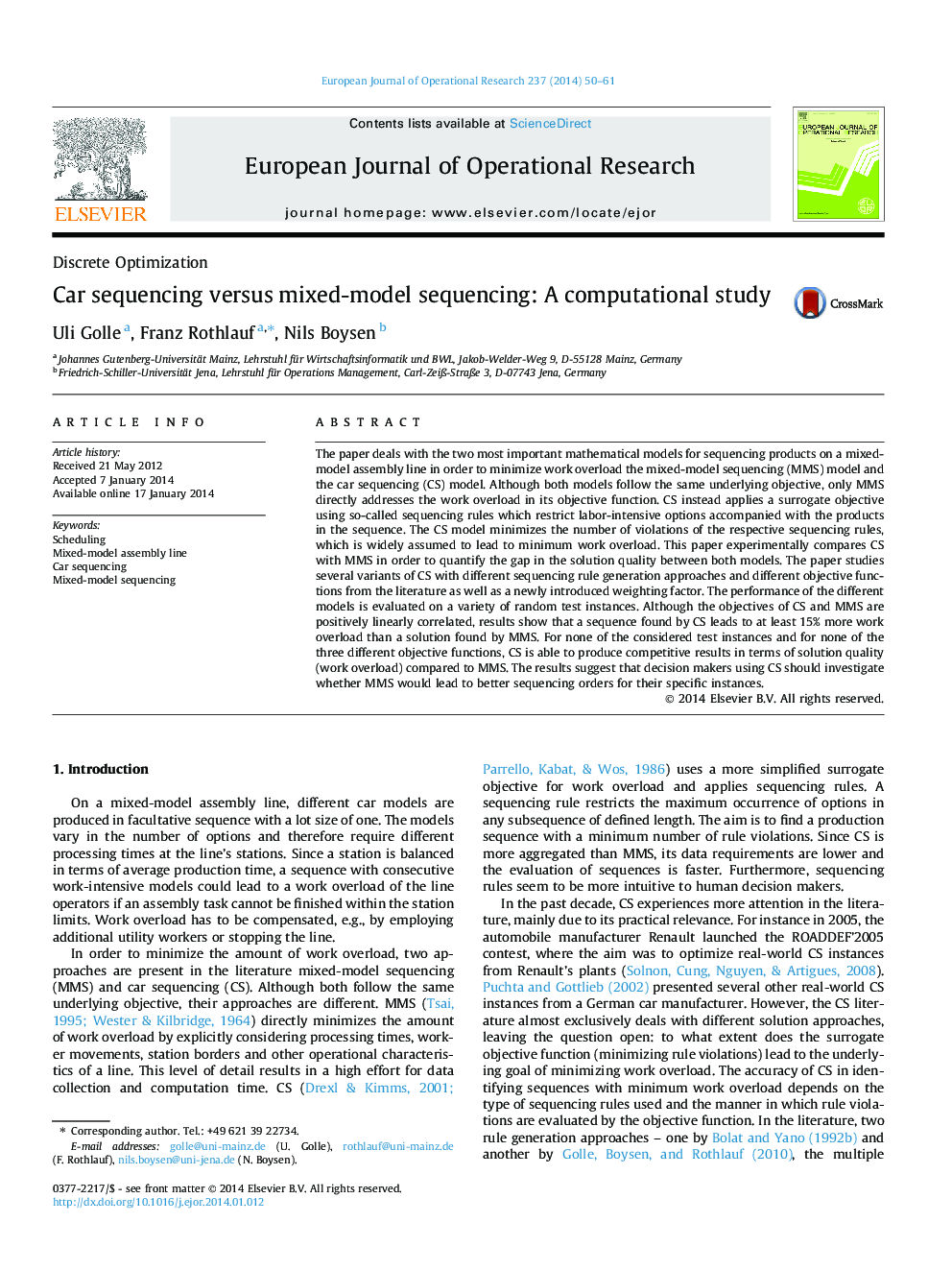| کد مقاله | کد نشریه | سال انتشار | مقاله انگلیسی | نسخه تمام متن |
|---|---|---|---|---|
| 480969 | 1446026 | 2014 | 12 صفحه PDF | دانلود رایگان |
• We compare the solution quality of mixed-model sequencing (MMS) and car sequencing (CS).
• We study several variants of CS with different sequencing rule generation approaches and different objective functions.
• Sequences obtained by using CS lead to at least 15% more work overload than solution found by MMS.
• CS is not able to produce competitive results in terms of solution quality compared to MMS.
The paper deals with the two most important mathematical models for sequencing products on a mixed-model assembly line in order to minimize work overload the mixed-model sequencing (MMS) model and the car sequencing (CS) model. Although both models follow the same underlying objective, only MMS directly addresses the work overload in its objective function. CS instead applies a surrogate objective using so-called sequencing rules which restrict labor-intensive options accompanied with the products in the sequence. The CS model minimizes the number of violations of the respective sequencing rules, which is widely assumed to lead to minimum work overload. This paper experimentally compares CS with MMS in order to quantify the gap in the solution quality between both models. The paper studies several variants of CS with different sequencing rule generation approaches and different objective functions from the literature as well as a newly introduced weighting factor. The performance of the different models is evaluated on a variety of random test instances. Although the objectives of CS and MMS are positively linearly correlated, results show that a sequence found by CS leads to at least 15% more work overload than a solution found by MMS. For none of the considered test instances and for none of the three different objective functions, CS is able to produce competitive results in terms of solution quality (work overload) compared to MMS. The results suggest that decision makers using CS should investigate whether MMS would lead to better sequencing orders for their specific instances.
Journal: European Journal of Operational Research - Volume 237, Issue 1, 16 August 2014, Pages 50–61
